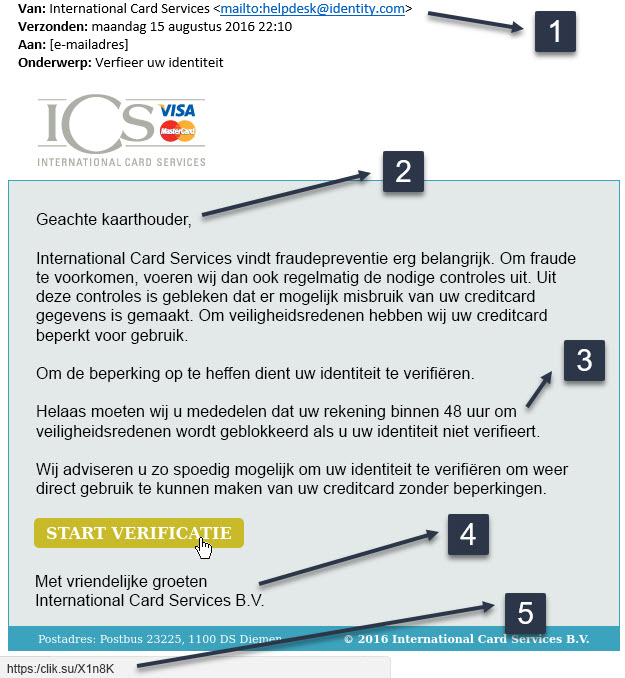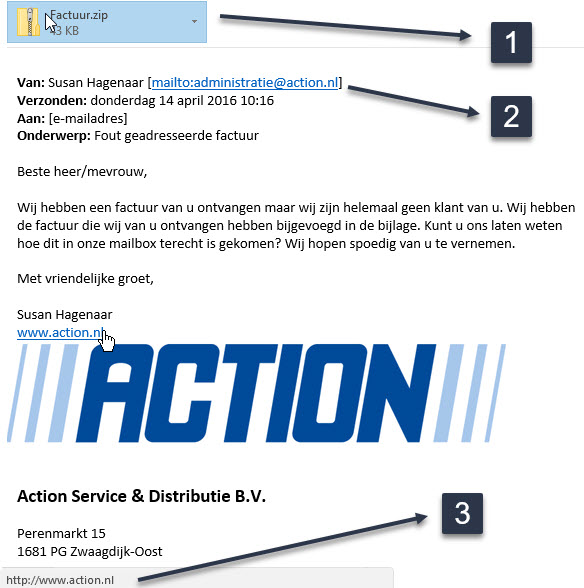Fraudsters send fake emails that look like they’re from a trusted sender, for example, a bank, credit card company, the government, or even your own employer.
In the email, they try to trick the recipient into revealing private information, financial information, and passwords. Email phishing is the most commonly used phishing technique.
How can you recognize a phishing email?
- The email will usually come from a well-known brand/domain.
- The email may have an attachment with a packaged file, which contains malware.
- The e-mail is often not addressed to you personally. Sometimes this can be the case, so do not take any risks.
- The e-mail can contain many spelling errors, phishing mails are getting better and better and are therefore more difficult to recognize.
- The e-mail will usually be urgently designed to put you under pressure, for example that your bank account will be blocked if you do not respond immediately.
- A website can be made in such a way that the link seems fine but there is just a letter in the domain different. For example, www.m1crosoft.com. (Do you see the error)?
- Below you will find a number of examples. Click on the description next to the figures for the explanation.

Here you can see that the e-mail from Visa does not come from ICS or VISA but from identity.com. Here you can see that we are dealing with a phishing email.
Often a phishing email is not addressed to you personally, but has a general salutation such as “Dear cardholder”. Please note that there are also other phishing ways where the mail can be addressed to you personally.
Often a phishing email has a compelling atmosphere and a link must be clicked urgently to keep an account open or that something is blocked. Your bank will never send this to you.
A phishing email will usually be sent from a large well-known brand. If the attack is aimed at you then it can also be something familiar from you, so always check the full e-mail.
What is very important for recognizing a phishing email is the link. Always check the link by hovering over it, but without clicking! You will then see if the correct web address appears or an unreliable website.

An authority will never send an invoice in this way as a zip file. A zip file itself is not a virus but a program to pack certain files and make them smaller in size. This file may contain malware, which can block the files on your computer. Without a good backup, there is little chance that you will still be able to use your files. In some cases, a ransom is requested to release your files.
For a cybercriminal, it’s easy to send an email from a domain that doesn’t belong to them. Even though this domain is real, the email remains a phishing email by the aforementioned zip attachment.
As mentioned in point 2, the domain is ”real” so by clicking you would end up on the website of the Action, but through the zip attachment you can see that this is a phishing email.
Write down for yourself how you have noticed it and pass this on to the ICT Helpdesk.
